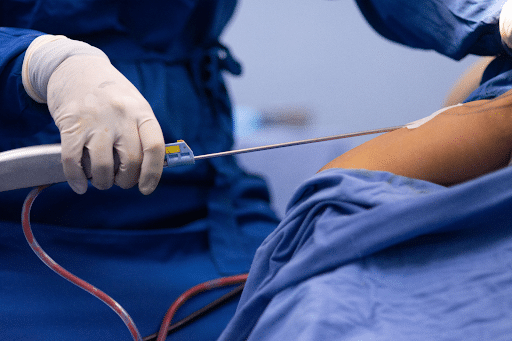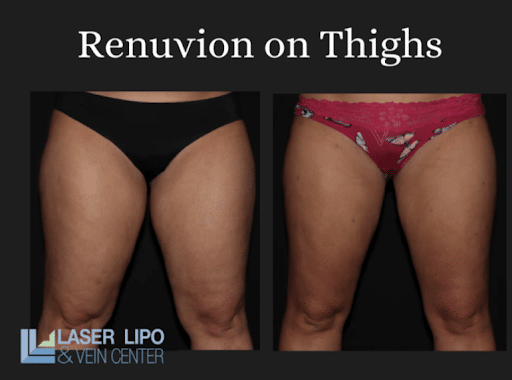Are you tired of stubborn fat that won’t disappear, no matter how much you diet and exercise? Liposuction might be the solution you’ve been looking for. But with so many different techniques and procedures available, knowing which one is right for you can be overwhelming. That’s why we’ve put together the ultimate guide to liposuction techniques, including AirSculpt, SmartLipo, and more. We’ll break down the differences between each method, explain how they work, and help you determine the best fit for your body and goals. Whether you’re just starting to consider liposuction or ready to book your procedure, this guide will give you all the information you need to make an informed decision and achieve the body you’ve always wanted. So let’s dive in and discover the world of liposuction!
Understanding the different types of liposuction techniques
Liposuction is a surgical procedure that removes excess fat from various body parts, including the abdomen, hips, thighs, buttocks, arms, and neck. There are several different liposuction techniques, each with unique benefits and drawbacks.
One of the newest and trendiest liposuction techniques is AirSculpt, a patented technology that liquefies fat cells and removes them with a gentle suction process. AirSculpt is minimally invasive, and the procedure is performed under local anesthesia, so patients can return to normal activities within a few days. While it’s touted as a new treatment, this technique has be around for over 20 years and recently rebranded under this name!
Another popular liposuction technique is SmartLipo, which uses laser technology to melt fat cells before removing them. SmartLipo is also minimally invasive, and the procedure is performed under local anesthesia. The laser also helps tighten the skin, which can help patients achieve a more sculpted appearance.
VASER liposuction is another technique that uses ultrasound technology to break down fat cells before removing them. This technique is known for targeting specific body areas and is often used to contour the abdomen, thighs, and arms.
Laser liposuction, or laser-assisted liposuction, uses laser energy to liquefy fat cells before removing them. This technique is often used to treat smaller body areas, such as the chin or neck.
Finally, tumescent liposuction is a traditional technique that involves injecting a solution of saline, lidocaine, and epinephrine into the targeted area before removing the fat cells. This technique can be more invasive than other options and requires general anesthesia.
AirSculpt liposuction: How it works and its benefits
AirSculpt is a type of liposuction that uses patented technology to remove fat cells from the body. The procedure is minimally invasive and is performed under local anesthesia.
During the procedure, a small incision is made in the skin, and a thin cannula is inserted into the targeted area. The cannula then releases a stream of pressurized air that liquefies the fat cells, which are removed using gentle suction.
One of the main benefits of AirSculpt is that it is that, like some other types of liposuction, it is minimally invasive and does not require general anesthesia. This means patients can return to normal activities within a few days of the procedure. AirSculpt is also known for producing natural-looking results, and because the fat cells are removed permanently, the results can be long-lasting.
SmartLipo liposuction: How it works and its benefits
SmartLipo is a type of liposuction that uses laser technology to liquefy fat cells before removing them. The procedure is minimally invasive and is performed under local anesthesia.
During the procedure, a small incision is made in the skin, and a thin cannula is inserted into the targeted area. A laser fiber is then inserted into the cannula, which emits energy that melts the fat cells. The melted fat is then removed using a gentle suction process.
One of the main benefits of SmartLipo is that the laser energy can also help tighten the skin, leading to a more sculpted appearance. SmartLipo is also minimally invasive and does not require general anesthesia, meaning patients can return to normal activities within a few days.
JPlasma (AKA Renuvion): How it works and its benefits
JPlasma (or Renuvion) is a revolutionary technology making waves in cosmetic surgery. It is a minimally-invasive procedure that uses plasma energy to rejuvenate the skin and improve its appearance. The technology was first introduced in 2010 and has since gained popularity due to its effectiveness and safety.
JPlasma (or Renuvion) combines helium gas and radiofrequency energy to create a plasma stream directed at the skin. This plasma stream heats the skin tissue, causing it to contract and tighten. At the same time, the plasma energy breaks down old collagen fibers and stimulates the production of new collagen, which is essential for healthy, youthful-looking skin.
One of the main benefits of JPlasma is that it is a minimally-invasive procedure. Unlike traditional cosmetic surgery, which requires incisions and sutures, JPlasma only requires small, barely noticeable incisions. This means that patients experience less discomfort and can recover more quickly.
Another benefit of JPlasma (or Renuvion) is that it is a versatile procedure that can be used on various areas of the body. It can treat the face, neck, arms, legs, and abdomen. This makes it an ideal treatment for patients who want to address multiple areas of their body.
JPlasma (or Renuvion) is also a safe procedure approved by the FDA. The technology has been extensively tested and is effective in improving skin tone, reducing the appearance of wrinkles, and tightening loose skin. It is also a non-surgical alternative to traditional facelifts, which can be risky and have a long recovery time.
JPlasma (or Renuvion) is a cutting-edge technology that has revolutionized the field of cosmetic surgery. Its ability to tighten and rejuvenate the skin without invasive surgery has made it a popular choice among patients. With its impressive benefits and proven effectiveness, it is no wonder that JPlasma is becoming the go-to treatment for those looking to improve their appearance and boost their confidence.
Laser liposuction: How it works and its benefits
Laser liposuction is a type of liposuction that uses laser energy to liquefy fat cells before removing them. The procedure often treats smaller body areas, such as the chin or neck.
During the procedure, a small incision is made in the skin, and a thin cannula is inserted into the targeted area. The cannula then emits laser energy that melts the fat cells, which are removed using a gentle suction.
One of the main benefits of laser liposuction is that it is minimally invasive and does not require general anesthesia. Laser liposuction is also known for producing natural-looking results, and because the fat cells are removed permanently, the results can be long-lasting.
Tumescent liposuction: How it works and its benefits
Tumescent liposuction is a traditional technique that involves injecting a solution of saline, lidocaine, and epinephrine into the targeted area before removing the fat cells. The solution helps to numb the area and reduce bleeding during the procedure.
During the procedure, a small incision is made in the skin, and a thin cannula is inserted into the targeted area. The cannula then breaks up the fat cells, which are removed using a gentle suction process.
One of the main benefits of tumescent liposuction is that it can treat larger areas of the body, such as the abdomen and thighs. Tumescent liposuction is also a tried-and-true technique that has been used for many years, meaning it has a proven track record of safety and effectiveness. All of the previously discussed types of liposuction are simply modifications of tumescent liposuction.
The recovery process after liposuction
After liposuction, patients can expect some bruising, swelling, and discomfort in the treated area. Most patients can return to work and other normal activities within a few days of the procedure, although strenuous exercise and heavy lifting should be avoided for a few weeks.
Patients may need to wear compression garments to help reduce swelling and promote healing. Pain medication may also be prescribed to help manage any discomfort. It’s essential to follow all post-operative instructions carefully to ensure the best possible results.
Risks and complications of liposuction
Like any surgical procedure, liposuction carries some risks and potential complications. These can include bleeding, infection, fluid accumulation, skin damage, and changes in sensation.
The best way to minimize these risks is to choose a qualified, experienced surgeon with a proven track record of safety and success. Patients should also be honest about their medical history and medications, as this can affect their risk of complications.
Choosing the right liposuction technique for you
Choosing the right liposuction technique depends on several factors, including the patient’s goals, the area(s) of the body being treated, and overall health and medical history. The skill and experience of the surgeon with the various techniques and technologies can be an important deciding factor. Patients can discuss their goals and concerns during a consultation with a qualified surgeon and learn more about the different liposuction techniques available. The surgeon can then recommend the technique best suited to the patient’s needs.
Conclusion
Liposuction is a popular and effective way to remove excess fat from the body and achieve a more sculpted appearance. By understanding the different liposuction techniques available, patients can make an informed decision about which is right for them. Whether you’re considering AirSculpt, SmartLipo, VASER, laser, or tumescent liposuction, the most important thing is choosing a qualified, experienced surgeon to help you achieve the best possible results.







